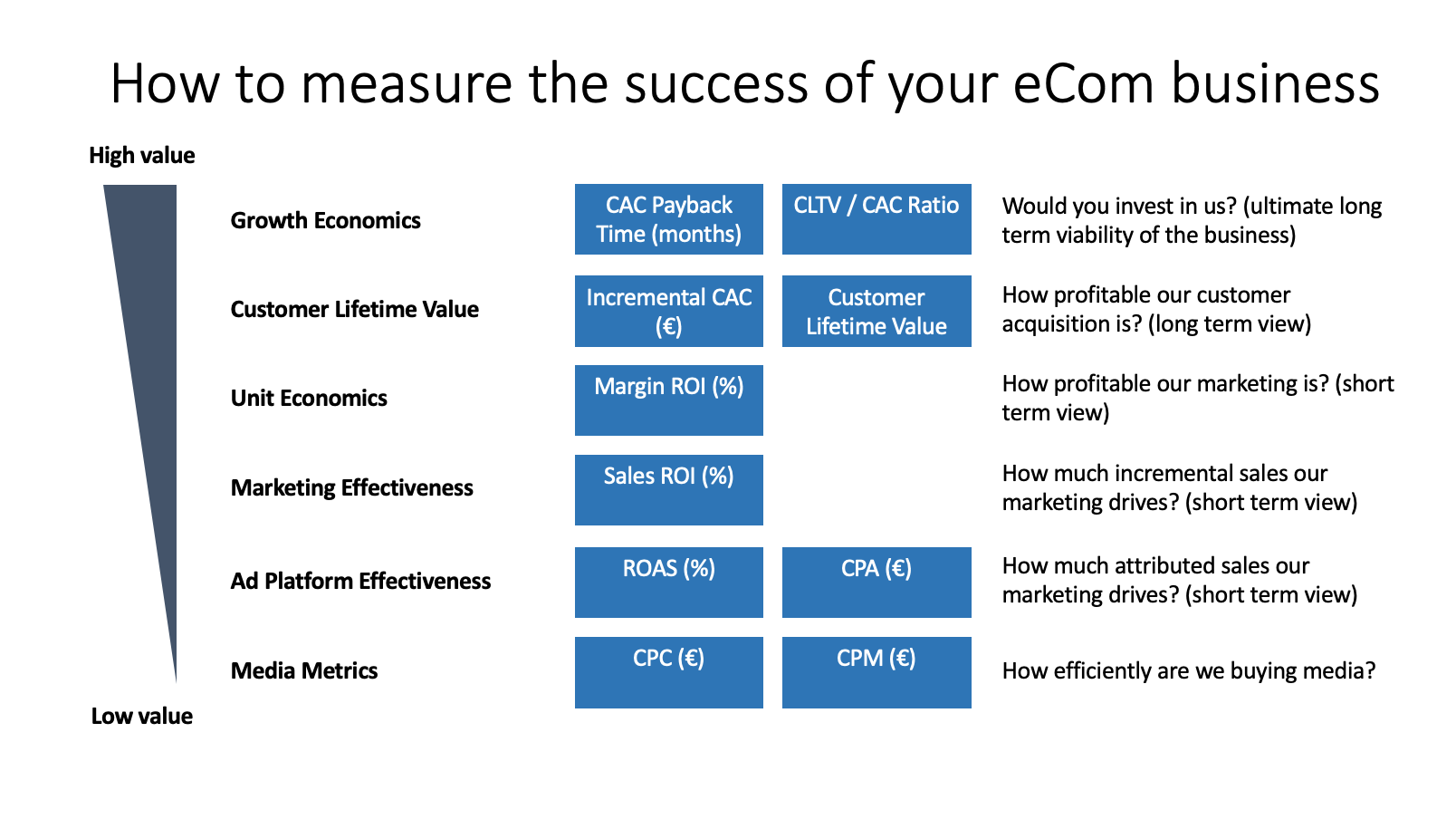Why use Shopify data instead of Google Analytics in media optimization?
In the current digital era, where data forms the backbone of successful marketing strategies, the provenance and quality of this data have taken center stage. Every decision, from content creation to ad spend, is often dictated by the insights garnered from these data sources. Among the multitude of platforms available, Shopify and Google Analytics (GA) emerge as frontrunners for companies looking to harness the power of data to optimize their digital marketing.
As businesses dig deeper into Marketing Mix Modeling (MMM) — a method that measures how different marketing actions affect sales — a big question comes up: Which of these two platforms, Shopify or GA, gives better and more useful information?
Taking a closer look, and benchmarking across a variety of parameters, it's evident that Shopify data is not just on par but is progressively outpacing GA in delivering more credible and holistic insights for MMM. Let’s delve into the reasons behind this paradigm shift:
Comprehensive Sales Data
GA presents a challenge that can't be overlooked in today's data-driven market. A foundational element of its data collection hinges on the acceptance of analytics cookies by users. Depending on the specific market and audience, only about 50-70% of users might accept these cookies. This means that a sizable chunk of sales transactions and conversions goes unrecorded. If a user doesn't consent to these cookies, their purchase journey remains hidden, leaving businesses in the dark about potentially crucial data points.
Contrastingly, Shopify stands out as a more comprehensive data solution in this regard. This platform is not encumbered by the cookie acceptance rates that GA grapples with. Instead, every transaction, irrespective of user settings, is logged and made available for analysis. When businesses turn to Shopify data for their modeling needs, they are granted a full picture, ensuring that no sale slips through the cracks and every bit of data is ready for a thorough examination.
More Reliable Location Data
GA provides insights on user demographics by identifying a user's country through their IP address. On paper, this seems straightforward. However, with the ever-growing popularity of Virtual Private Networks (VPNs), the accuracy of this approach becomes questionable. VPNs allow users to appear as though they are accessing the internet from locations other than their actual physical location, thereby potentially skewing the data on GA.
In contrast, Shopify adopts a more grounded approach. Instead of relying on possibly misleading IP addresses, Shopify zeroes in on the "Shipping country" provided by customers during their purchase process. This metric is undeniably more accurate because, regardless of online disguises, customers invariably want their purchases delivered to their true address. It's a practical and direct method that ensures the location data in Shopify is not just an estimate, but a reflection of a customer's genuine location.
Authentic "New vs. Returning User" Insights
GA’s feature of differentiating new and returning users is rooted in cookie data. Again, similarly to location data, this differentiation seems rather straightforward, however, the waters are muddied with developments like Apple's decision to set cookie expiration at just 7 days. Such a short lifespan means users could be inaccurately tagged as 'new' on GA merely because they returned after a week's hiatus. This poses challenges for businesses striving for accuracy in their customer analytics, as they might not be getting the whole story.
Shopify provides a refreshing contrast to this convoluted approach. Skipping the unreliability of cookies, Shopify bases its user classification on tangible sales data. A straightforward criterion is set: if you're making your first purchase, you're 'new', and if you've bought before, you're 'returning’. This method not only simplifies analysis but also ensures businesses possess a truer, more unclouded perspective of their customer base, allowing them to craft more effective and targeted marketing strategies.
Gross Margin Insights
Simply analyzing sales Return on Investment (ROI) doesn't provide the complete picture. It's essential to dive deeper and consider the actual profit margins - the gross margin - to truly understand the effectiveness of your marketing strategies. Shopify excels in providing this layer of insight, granting businesses access to a deeper, more meaningful metric: the margin ROI. This offers a precise understanding of profitability, beyond just sales, shedding light on the genuine financial health of marketing efforts.
Moreover, Shopify's capabilities extend further when this data is juxtaposed with user categorizations of 'new' versus 'returning'. By combining these datasets, businesses can not only see the immediate impact (or uplift) of their strategies on attracting new customers but also gauge the long-term effects by examining the Customer Lifetime Value (LTV)-based ROI. This dual perspective ensures that marketing endeavors are not just about immediate gains, but also about fostering lasting customer relationships and optimizing long-term returns.
Factoring in Returns
Businesses are frequently confronted with unique challenges that significantly impact their bottom line. One of the most prominent issues is the high frequency of product returns. With rates frequently hovering between 20-40%, these returns can drastically distort the apparent success of a sales campaign. Initial sales figures might paint a rosy picture, but when the dust settles and returns start coming in, that success can quickly be diminished. Relying solely on gross sales figures without adjusting for returns can lead to skewed perceptions and potentially misguided business decisions.
Shopify offers a solution to this issue. Unlike some other platforms, such as GA, that might only showcase gross sales, Shopify allows businesses to model their sales data after accounting for returns. This results in a more transparent and realistic view of net sales. By leveraging this data, businesses can make more informed decisions, ensuring that their strategies are grounded in reality, and are better equipped to handle the dynamic nature of customer preferences.
Understanding VAT Inclusions
For businesses, understanding the breakdown of their revenue is crucial, especially when it comes to discerning the true picture from potentially inflated numbers. GA has a particular aspect that can be misleading in this context: it often displays revenue inclusive of Value Added Tax (VAT). VAT, a consumption tax placed on a product at each stage of production, can significantly amplify the apparent revenue. By including VAT in the total revenue, GA can present a much more positive financial picture than what truly exists. This can be a potential pitfall for businesses, especially when making decisions based on this inflated data, as it doesn't reflect the actual revenue that the company retains post-tax.
In stark contrast, Shopify brings transparency to the table. Instead of bundling everything under a single revenue figure, Shopify offers a clearer demarcation, helping businesses distinguish between genuine revenue and the added tax components. By providing this level of detail, Shopify ensures that businesses aren't just seeing numbers but understanding them. This clarity becomes invaluable for strategic planning, enabling companies to make well-informed decisions based on an accurate financial landscape.
Key takeaways
When weighing the merits of Shopify data against those of GA for MMM, the scales tip decidedly in favor of Shopify. The platform's commitment to providing robust, comprehensive, and, above all, accurate datasets means that businesses aren't just reacting to numbers but are instead making proactive, informed decisions based on genuine insights.
Further, the real strength of Shopify shines when it comes to optimizing marketing strategies. With data that is rooted in actual customer behaviors, purchases, and patterns, businesses can fine-tune their approaches, ensuring their marketing dollars are directed most effectively. This clarity and precision translate to strategies that are tailored to genuinely resonate with the target audience.
As we venture further into this ever-evolving digital era, the integrity of data will increasingly become the cornerstone of business success. In this context, turning to platforms like Shopify together with MMM, which prioritize genuine and comprehensive insights, will be more than just a choice—it will be a mandate for those aiming for sustained growth and success.

This table provides a summarized comparison of GA and Shopify from the perspective of businesses looking to gain insights from their data. Depending on the specific needs and goals of your business, one platform might offer advantages over the other. However, for many e-commerce businesses, Shopify's direct insights into sales and customer behaviors offer undeniable advantages.
Curious to learn more? Book a demo.

You May Also Like
These Related Stories

Offline vs. Online Media in Fashion Retail: When Does Offline Win?

How Can MMM Help Optimize eCommerce KPI Challenges?

